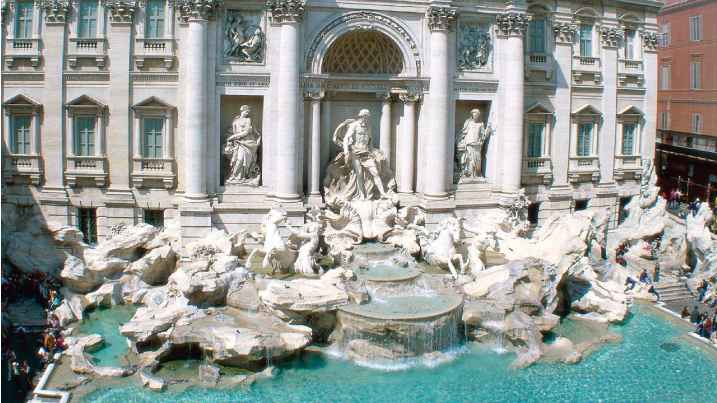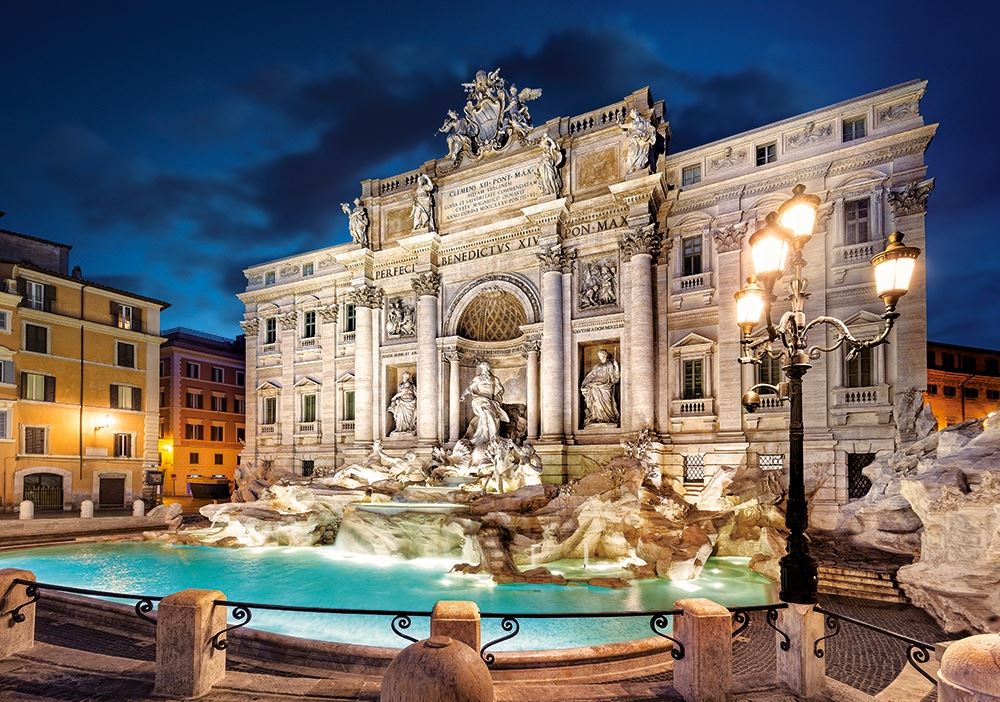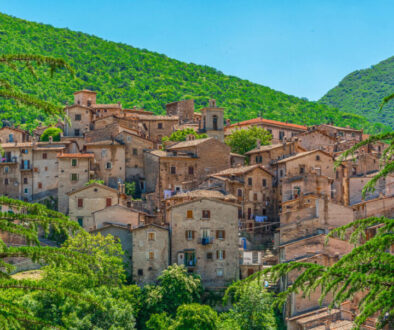The Trevi Fountain is one of the top attractions in Rome and one of the most famous fountains in the world.
There was no time to lose: I was walking as fast as I could to one of the most prominent places of the Eternal City, knowing very well that the small square in front of the Trevi Fountain gets extremely crowded every day of the year. Then, suddenly, the majestic white fountain appeared right in my face. The early morning sun was reflected on the Travertine stone, but part of it was still covered in shade falling on the fountain from the adjacent building.
There was a surprisingly small number of people on the square, I directly walked down to the waterline, and sat down to enjoy the spectacular view of the Trevi Fountain in the warm spring sun. The name of the fountain most probably comes from Trivium, or three streets – even now, three streets do end on the square of Trevi Fountain. The baroque fountain was constructed in the mid-1700s, with the Poli Palace as a backdrop against whose wall the fountain was built. This is the place where the important Virgo aqueduct ended, a vital water supply for the city of Rome. It was only in the 6th century, when the Ostrogoths destroyed the aqueduct, that the city was deprived of this important waterline.




It is called a fountain, but the Trevi is rather a complex scene of sculptures and reliefs full of symbolism. In the heart of the fountain, you can see the dominating statue of Ocean, bearded, and with a wand similar to the ones Roman Emperors had, under a triumphal arch with an inscription. Above Ocean, four allegorical figures depicting the vital effects of rain and water for the fertility of the earth: fruits, crops, produce, and gardens, all represented as lady-like statues. On top of the fountain, the virgin who, according to legend, pointed out the source of water to Roman soldiers in 19 BCE; the source was outside Rome, and an aqueduct was constructed to channel the water to the city. On the other side of the Corsini coat of arms, Agrippa, commanding the construction of the aqueduct. It is interesting that, though the construction of the Trevi Fountain was ordered by pope Clemens XII after several other popes had similar plans, the symbolism of the fountain mostly refers to classical religious mythology. Ocean is flanked by Abundance and Health, while below, one of the most prominent parts of the Trevi Fountain consists of Tritons, mermans, one of which blows a conch, holding their hippocamps, or winged sea-horses in the water.
Picture of Trevi fountain (Italy)
The Virgin indicating the source of the water and Agrippa ordering the construction of the aqueduct on top of the Trevi Fountain The sun was climbing higher, casting more light on the splendid work of art in front of my eyes. Behind and above me, a sun-glassed policewoman was strictly supervising the Trevi Fountain, blowing her whistle every time someone tried to enter the fountain. I tried to imagine what a nightmare her job must be: trying to keep tourists out of the almost holy waters of the world famous fountain. What is more: thanks to the popular belief that one has to throw a coin (or, even two coins) with the right hand over the left shoulder, in the fountain while standing with the fountain behind you to ensure your return to the city, it is estimated that some 3000 euros a day are thrown into the fountain – so it is easy to understand why some people are interested in trying to catch part of what for many would be a nice monthly salary. Officially, the money is donated to a supermarket for the needy in Rome. After my first visit to Rome during which I threw in some old lire coins, I stopped throwing in coins, but I still keep on returning to this fantastic city.
The remarkable fountain also appeared in the famous La Dolce Vita movie by Fellini, in which Ekberg and Mastroianni played a scene with cinematic fame. The Trevi Fountain is one of those places that at the same time hold great historic significance, beauty, and that are also the very top of the most visited sights in the city, giving it a definite feel of mass-tourism and the sometimes crazy things that come with it.
The Trevi Fountain is included in our Sightseeing Tours in Rome


